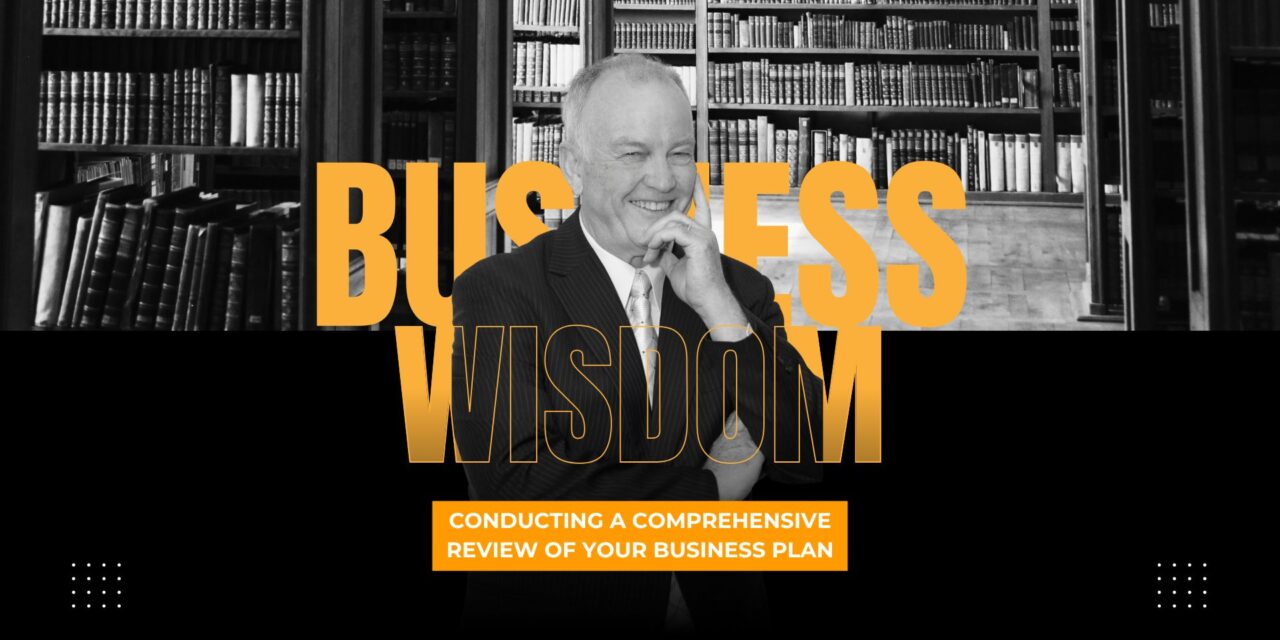Too many business owners treat reviewing their business plan like a once-a-year obligation. But your business plan isn’t just a document to impress the bank or check a box: it’s your roadmap.
In this episode, we look at how a business plan keeps you on course, including:
- What to consider during a business plan review
- How to reassess your goals and mission
- When to reset your strategic priorities
Why a business plan needs reviewing
Like any good map, a business plan needs checking to make sure you’re still on course and to warn you when the landscape changes. Reviewing regularly keeps you aligned with your goals, your values, and the market you serve.
Revisit Your Vision, Mission, Goals and Milestones
Start with your “why”. Why does your business exist? Who does it serve? What impact do you want to make? Has your mission evolved, or have your personal goals shifted?
Sometimes new clients emerge who better align with your values. Other times, you might have drifted away from your original path. If your mission is off, the rest of your plan will be misaligned. This is the foundation.
Next, look at your goals. Are they still relevant, measurable, and realistic with current resources and market conditions? Review your annual and quarterly goals: what’s been achieved, what’s still in progress, and what needs adjusting or dropping altogether.
This isn’t about failure, it’s about refinement. As Confucius taught, adaptability and learning matter more than clinging to unattainable targets.
Assess Financial Performance
Your business plan must be grounded in financial reality. Review revenue trends, profit margins, expenses, cash flow, and pricing structure. Are you meeting your targets? Are your offers priced for both value and sustainability? Can your pricing hold up in shifting market conditions? Look for ways to improve efficiency and reduce waste.
Remember: your business should serve you, not keep you stuck in survival mode.
Re-evaluate Your Ideal Client
Over time, your audience can shift. Have you lost sight of who your ideal client really is? Who are your best clients right now, and what problems are they bringing to you? Are your current offers still the best solutions for them?
Often, when businesses drift from their mission or values, they also drift from their ideal client. Realignment of your messaging, offers, and delivery ensures smoother sales, fulfilment, and retention.
Evaluate Your Offers and Delivery
Now, take a hard look at your product or service structure. Which offers are selling well? Which has become a drain? What delivers real value, and what just adds noise? Maybe you’ve outgrown a service.
Maybe your strongest offer needs a refresh. Or maybe you’re spreading yourself too thin. The goal is simplification and alignment. Your offers should move clients forward and drive business growth.
Check Marketing and Sales Alignment
Marketing and sales are where many business plans grow outdated. Ask yourself: Is your message still clear and relevant? Are you attracting quality leads, not just volume? Is your sales process converting at the rate you need? Market shifts, evolving trends, and changing customer behaviour can all impact your results.
What worked two years ago may not work now, so review, refine, and adapt.
Operations and Team Check-In
This is often overlooked but critical for sustainable growth. Do your systems still support your goals? Is your team clear on their roles? Where are things breaking down?
This might be the time to document new SOPs, adopt better communication tools, or restructure your team. Even if you’re a solo operator, you still need systems. Strong operations keep your plan viable.
Identify New Opportunities and Risks
As you review, look forward as well as back. What new opportunities have emerged in the last six months? What risks are more visible now? Competition, technology, or shifting buyer behaviour?
A resilient business identifies where to innovate and where to protect against disruption. Build these insights into your plan so you’re always ahead of change.
Reset Strategic Priorities
By this point, you’ll know what’s working, what isn’t, and where the gaps are. Now, reset your strategic priorities for the next 90 days and for the year ahead.
Choose no more than three high-impact priorities and build your quarterly plan around them. Update your business plan to reflect your real direction. A business plan is not a static document; it’s a living guide for decision-making.
Highlights
- 01:05 Revisit your vision, mission, goals and milestones
- 02:39 Assess financial performance
- 03:25 Reevaluate your ideal client
- 04:03 Evaluate your offers and delivery
- 04:42 Check marketing and sales alignment
- 05:18 Operations and team check-in
- 05:57 Identify new opportunities and risks
- 06:34 Reset strategic priorities









